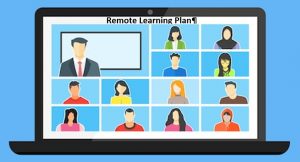Parent Survey 2021/22: “We are delighted with the school, particularly during the period of remote learning during the school closure. Our children are making excellent progress, both academically and socially.”
Our school curriculum is understanding of the fact that learning happens in stages, at different paces, and at The Lea each child is enabled and equipped to move forward in their learning journey with bigger challenges and new opportunities or extra support as needed.

Where the risk of infection and transmission of Covid-19 remains in the community, we will adapt our school curriculum so that where a class, group or a small number of pupils need to self-isolate, or local restrictions require pupils to remain at isolated, they can continue to learn from home.
In achieving this, our remote learning plans fall in line with expectations from the DfE (https://www.gov.uk/government/publications/actions-for-schools-during-the-coronavirus-outbreak/guidance-for-full-opening-schools#res) with regards to remote learning and additionally take into account the context of our school community giving consideration to the mental health and wellbeing of our children, families and staff. Mr Berry is the Remote Learning Senior Lead.
Our contingency plans are dependent on numerous factors and there are innumerable possible scenarios to prepare for. However, these contingency plans are based on four broad scenarios. At any stage, should a class teacher or numerous staff be too unwell as a result of Covid related illness to provide remote learning, a reduced version of provision will be put in place.
For pupils with SEND, their teachers are best-placed to know how the pupil’s needs can be most effectively met to ensure they continue to make progress even if they are not able to be in school due to self-isolating. We will work collaboratively with families, putting in place reasonable adjustments as necessary, so that pupils with SEND can successfully access remote education alongside their peers.
In all scenarios, the provision put in place will be similar across the school however; the content of teaching tasks and expectations on learning will be dependent upon the age of the children.
Example – Home Learning Year 2
Example – Home Learning Year 6
Scenario |
Remote learning provision |
| A child tests positive and has been in school during the infectious period meaning a class “bubble” is required to isolate for 14 days due to close contact. |
|
| The entire school is closed due to national or local lockdown. | |
| A child is required to self-isolate having had contact with an infected person or living in a house with an infected individual, where the rest of the class “bubble” remain in school. |
|
| A parent elects to keep their child at home following concerns over contact with an infected person. E.g. year 6 class is asked to isolate and a child is kept at home in year 5. |
In line with DfE guidance, unless there is close contact (as defined earlier), there is no need for children to isolate and they should return to school as normal. Absence of this kind will be noted as unauthorised. |
For all scenarios, ‘close contact’ means:
- direct close contacts – face to face contact with an infected individual for any length of time, within 1 metre, including being coughed on, a face to face conversation, or unprotected physical contact (skin-to-skin)
- proximity contacts – extended close contact (within 1 to 2 metres for more than 15 minutes) with an infected individual
- travelling in a small vehicle, like a car, with an infected person
To support the remote learning process, various online learning resources will be used. These include:
- Reading Eggspress – in addition to your own reading for enjoyment, there are comprehensions, spelling games and books to read on here: https://readingeggspress.co.uk
- Times Tables Rockstars on https://ttrockstars.com/
- Education City – there will be a selection of tasks set for Maths, English and Science with Learn It sections to support some concepts if you need them. There are downloadable worksheets, too, to print out and try. Their are lots of different games and activities on this site: https://ec1.educationcity.com
- Fitter Futures subscription – https://app.fitterfuture.com/student/auth/login
- LetterJoin: https://www.letterjoin.co.uk/. Use this to practise writing spellings using your neat joined handwriting
- The government’s Oak Academy online lessons can be used for remote learning for every year group, covering a wide range of curriculum objectives: https://www.thenational.academy/
- Letters and Sounds for Home and School – virtual phonics lessons. https://www.youtube.com/channel/UCP_FbjYUP_UtldV2K_-niWw/featured?view_as=public
